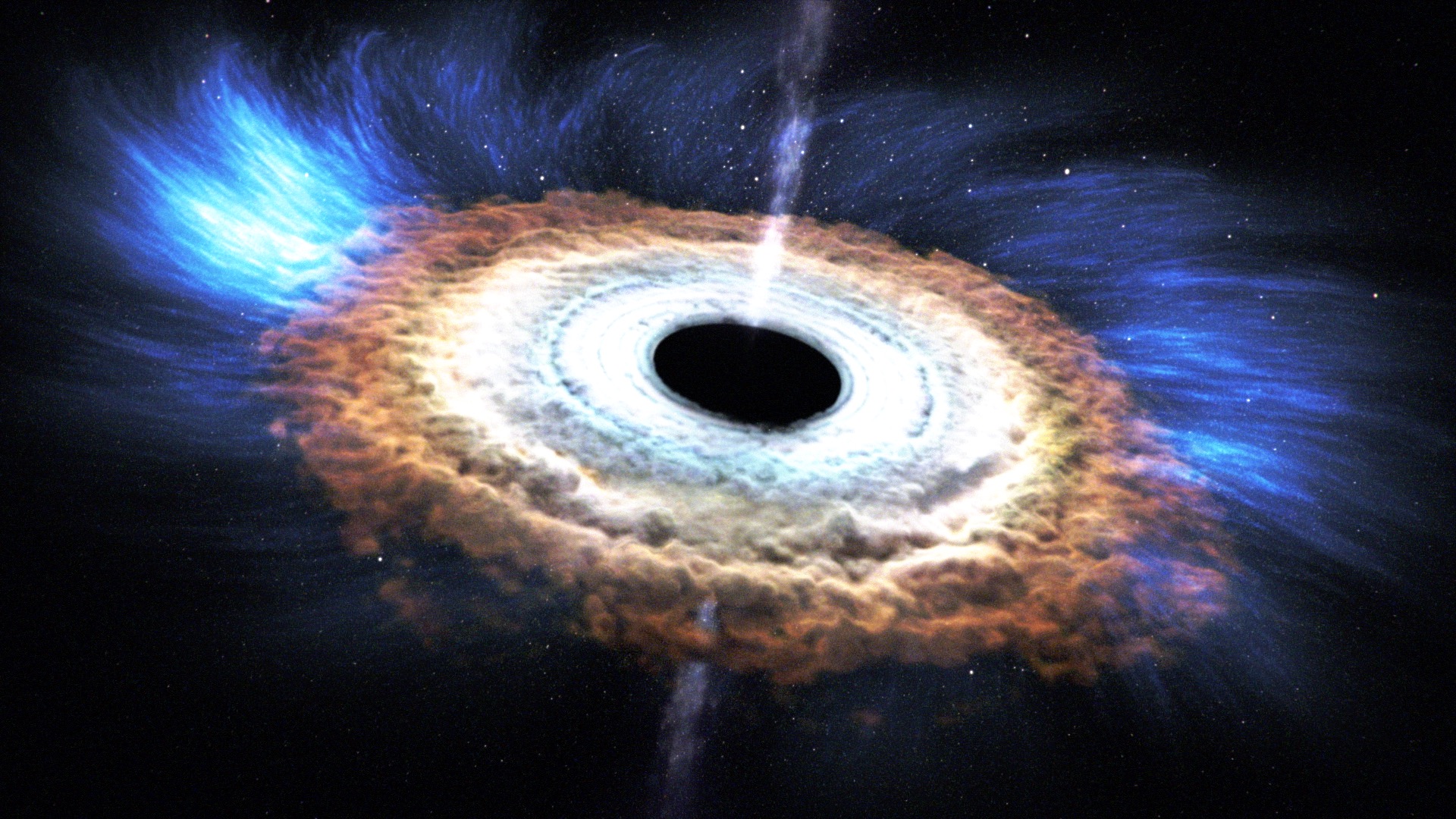A Star Is Torn

Scientists uncover new details about what happens when a black hole destroys a star.
When a star wanders too close to a black hole, the intense gravity of the black hole results in extreme tidal forces that can rip the star apart. In these events, called "tidal disruptions," some of the stellar debris is flung outward at high speed while the rest falls toward the black hole by spiraling inward in a disk. But how this process starts has remained a mystery. Recently, astronomers using observations from three NASA X-ray space telescopes were able to witness the formation of such a disk near a supermassive black hole that lies in a galaxy about 290 million light-years away. As the disk forms, its central region heats up tremendously, generating a huge amount of X-ray light. By tracking how the X-ray light changed over time, researchers could determine the structure of the debris field circling the black hole. Watch the video to see an artist’s rendering of the event.
This animation shows the process of a how a star is ripped apart by a black hole.

When a star gets too close to a black hole, material from the star falls toward it.

Eventually the material merges into a smooth, hot disk that circles the black hole.

The disk glows brightly in X-rays (blue). By observing how the X-rays change over time, scientists can study the evolution of the disk.
For More Information
See NASA.gov
Credits
Please give credit for this item to:
NASA's Conceptual Image Lab
-
Writer
- Francis Reddy (Syneren Technologies)
-
Animator
- Brian Monroe (USRA)
-
Producer
- Scott Wiessinger (USRA)
-
Scientist
- Jon Miller (University of Michigan)
Release date
This page was originally published on Thursday, October 29, 2015.
This page was last updated on Wednesday, May 3, 2023 at 1:49 PM EDT.
